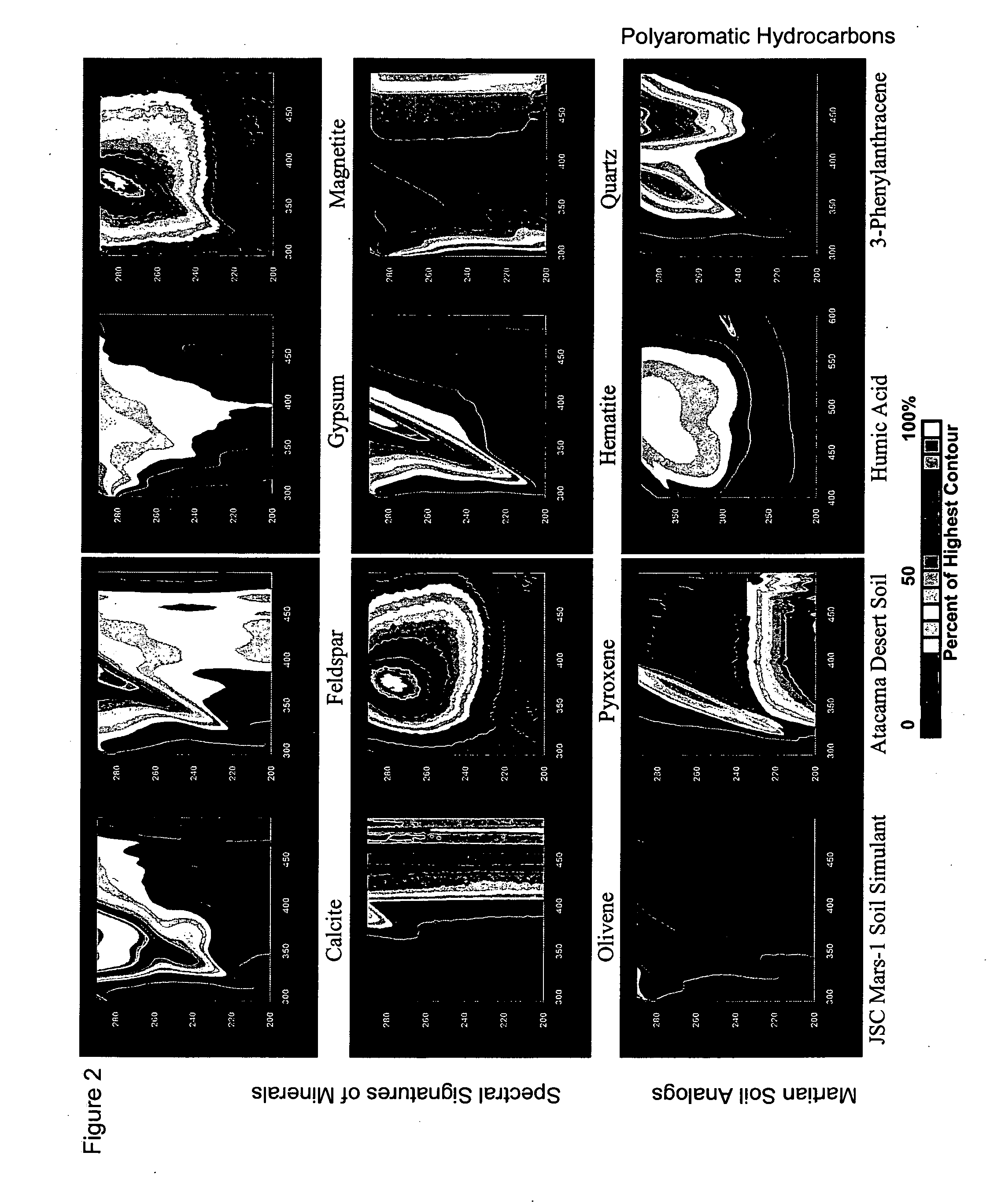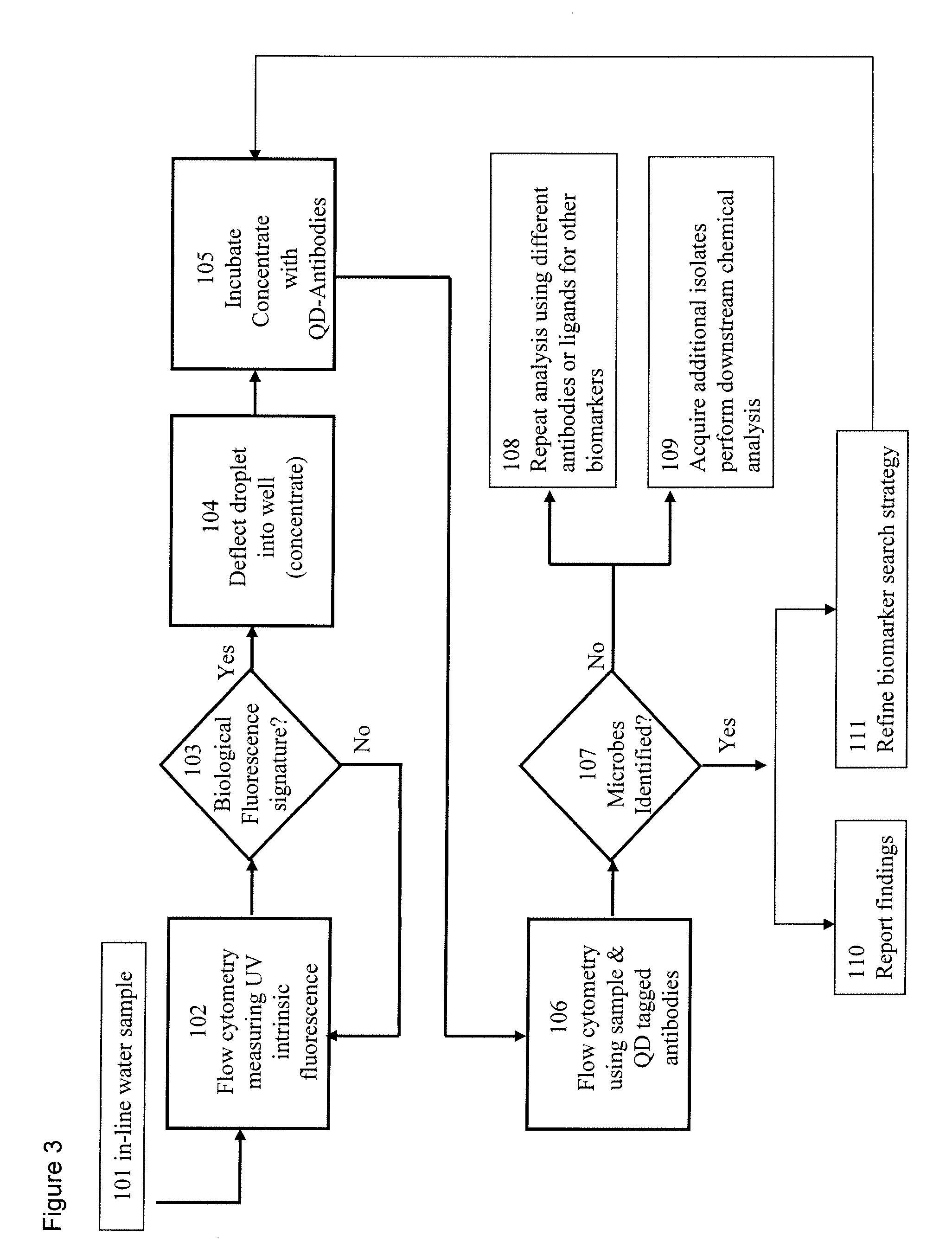System and method for monitoring an analyte
a technology of analyte and system, applied in the field of system and method for monitoring analyte, can solve the problem of slow process of using a series of biochip assays
- Summary
- Abstract
- Description
- Claims
- Application Information
AI Technical Summary
Benefits of technology
Problems solved by technology
Method used
Image
Examples
example 1
[0091]Alfipia, Burkolderia, and Rhodopseudomonas are bacterial strains that were cultured from soil obtained from the dry valley of the Atacama Desert in Chile. Halobacteria salinarum, Deinococcus radiodurans, and Psychrobacter cryopegella have adapted to conditions of high salinity, dryness & radiation, and cold temperatures, respectively. Magnetosomes (intracellular magnetite crystals) in AMB-1 cause them to be ferromagnetic. Synechocystzs sp. are photosynthetic oxygen producing cyanobacteria and in the absence of light, can survive by utilizing energy and carbon from an appropriate source (e.g. glucose). All of these microorganisms have a dominant tryptophan component in their EEM (EEM's of Synechocystis sp. and Halobacteria also show the presence of tyrosine). See FIG. 1.
[0092] While metal ion impurities can change the appearance of EEM signatures, none of these signatures, except nominally pyroxene and magnetite (both minimally fluorescent, different peak position), are simila...
example 2
[0093] Reagentless detection. A large frame argon laser and a frequency doubled argon laser are tuned to 275 nm and 229 nm, respectively. These wavelengths are used to interrogate the hydrodynamically focused fluid stream containing the sample. Forward and side scatter data from a Krypton laser (407 nm) and intrinsic fluorescence from the bacteria (340 nm) in the stream is collected by photomultipliers and used to provide a reagentless detection of single bacteria as they flow by. Photomultipliers may also be used to measure fluorescence in the 330 nm regime using separate spots on the sample flow stream where 229 nm and 275 nm light are applied using a frequency doubled and large frame UV argon laser respectively. If a predetermined threshold is exceeded, then the bacteria are collected from the stream by electrostatically deflecting them into a test tube. Alternatively, the bacteria / second detection rate is used to determine if a predetermined threshold (e.g., a threat threshold) ...
PUM
| Property | Measurement | Unit |
|---|---|---|
| wavelength | aaaaa | aaaaa |
| wavelength | aaaaa | aaaaa |
| wavelength | aaaaa | aaaaa |
Abstract
Description
Claims
Application Information
 Login to View More
Login to View More - R&D
- Intellectual Property
- Life Sciences
- Materials
- Tech Scout
- Unparalleled Data Quality
- Higher Quality Content
- 60% Fewer Hallucinations
Browse by: Latest US Patents, China's latest patents, Technical Efficacy Thesaurus, Application Domain, Technology Topic, Popular Technical Reports.
© 2025 PatSnap. All rights reserved.Legal|Privacy policy|Modern Slavery Act Transparency Statement|Sitemap|About US| Contact US: help@patsnap.com



